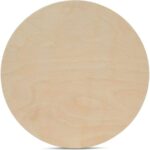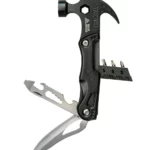I. Understanding the Appeal of Vintage Amplifiers for Audiophiles
II. Step-by-Step Guide to Upcycling Your Vintage Amplifier
III. Tips for Enhancing Sound Quality and Aesthetic Appeal
When it comes to sound quality, audiophiles often find themselves drawn to vintage amplifiers like moths to a flame. But what is it about these classic beauties that captures the hearts—and ears—of music lovers everywhere? Let’s dive into the world of vintage amplifiers and understand their appeal.
Rich History and Craftsmanship
One of the primary reasons audiophiles gravitate toward vintage amplifiers is the rich history and craftsmanship that come with them. Many vintage amps were built during a time when manufacturers prioritized quality materials and hand-built techniques. Here’s why that matters:
- Durable Construction: Vintage amps often feature robust components that can stand the test of time. You’re not just buying an amplifier; you’re investing in a piece of audio history.
- Unique Design: The aesthetics of vintage amplifiers can be breathtaking. From retro wood finishes to classic dials and meters, these pieces of gear often look as good as they sound.
Superior Sound Quality
For many audiophiles, the sound quality produced by vintage amplifiers is unmatched. Here’s what sets them apart:
- Warmth and Character: Many enthusiasts praise vintage amplifiers for their warm, rich sound. This is often attributed to the analog components and tube technology found in many old-school models.
- Dynamic Range: Vintage amps often deliver a dynamic range that can make music come alive. The subtle nuances and details in your favorite tracks become more pronounced, creating a more immersive listening experience.
Collectibility and Community
There’s also a social aspect to collecting vintage amplifiers that can’t be overlooked. Many audiophiles love to connect with others who share their passion. Here’s why:
- Community Support: Forums and online groups dedicated to vintage audio gear offer a wealth of knowledge and support. Whether you’re seeking advice on restoration or want to share your latest find, there’s a community waiting for you.
- Collecting Passion: Vintage amplifiers can become collectible pieces of art. The thrill of the hunt can be exhilarating, whether you’re scouring flea markets or online auctions for that rare gem.
Environmental Consciousness
In today’s eco-conscious world, upcycling and restoring vintage amplifiers can be seen as a sustainable choice. Rather than contributing to the fast-paced cycle of new electronics:
- Reducing Waste: By giving an old amplifier a second life, you’re helping to reduce electronic waste.
- Preserving History: Each vintage amplifier has its own story. By restoring it, you’re keeping a piece of audio history alive for future generations to enjoy.
In summary, the appeal of vintage amplifiers for audiophiles is multi-faceted. From their unique craftsmanship and sound quality to the vibrant community and sustainable practices, there’s something inherently special about these devices. If you’re considering diving into the world of vintage audio, know that you’re not just purchasing equipment; you’re embracing a lifestyle and a rich tradition of sound.
Step-by-Step Guide to Upcycling Your Vintage Amplifier
So, you’ve got your hands on a vintage amplifier, and you’re ready to breathe new life into it? Fantastic! Upcycling your vintage gear not only enhances its performance but also adds a personal touch that new gadgets just can’t match. Let’s walk through the steps together to transform your amplifier into a stunning piece of audio art.
1. Assess the Condition
Before diving into any upgrades, take a moment to evaluate the amplifier’s condition. Here’s what to check:
- Exterior: Look for any significant scratches, dents, or rust.
- Interior: Open it up and inspect the components. Look for cracked capacitors, burnt resistors, or any signs of wear.
- Wiring: Check for frayed or loose wires which can lead to poor performance or safety hazards.
2. Gather Your Tools and Supplies
Once you’ve assessed the condition, you’ll need to gather some essential tools and supplies:
- Multimeter (for checking voltages)
- Screwdriver set
- Soldering iron and solder
- Capacitors, resistors, and any other replacement parts
- Cleaning supplies (isopropyl alcohol, cotton swabs)
- Optional: Paint or wood stain for aesthetic upgrades
3. Clean the Amplifier
Cleaning is a crucial first step. Dust and grime can affect performance and aesthetics:
- Use a soft cloth to wipe down the exterior.
- For the interior, carefully remove dust using a can of compressed air.
- Use isopropyl alcohol and cotton swabs to clean the circuit board and connections.
4. Replace Old Components
Old components can often be the Achilles’ heel of vintage amplifiers. Here’s how to replace them:
- Capacitors: Look for electrolytic capacitors that need replacing. Use your multimeter to check their values.
- Resistors: If you spot any burnt or out-of-spec resistors, they should be replaced as well.
- Tubes: If your amplifier is tube-based, consider replacing old tubes with higher quality or modern options for improved sound.
5. Upgrade the Sound Quality
Now, let’s talk about enhancing that sound quality! Here are a few tips:
- Capacitor Upgrades: Consider high-quality film capacitors for better sound clarity.
- Speaker Connections: Upgrading speaker terminals can lead to improved connectivity and sound.
- Cabling: Use high-quality cables for inputs and outputs to minimize signal loss.
6. Personalize the Aesthetics
Finally, don’t forget to make it your own! Whether it’s a fresh coat of paint or custom knobs, your amplifier should reflect your style. Consider:
- Choosing colors that match your space.
- Adding custom knobs or handles for a unique touch.
- Replacing or restoring the grill cloth to give it a fresh, stylish appearance.
And there you have it! Upcycling your vintage amplifier can be a rewarding process that not only enhances performance but also creates a unique expression of your personal style. So grab your tools, embrace your creativity, and enjoy the journey of breathing new life into your amplifier!
Tips for Enhancing Sound Quality and Aesthetic Appeal
So you’ve got your vintage amplifier and you’re ready to take it to the next level! Enhancing both the sound quality and aesthetic appeal of your amp can not only elevate your listening experience but also make a stunning statement in your space. Here are some friendly tips that will help you achieve just that!
1. Prioritize Cleanliness
Before diving into any upgrades, it’s crucial to start with a clean slate. Dust and grime can affect your amp’s performance, so give it a thorough cleaning. Use a soft, dry cloth to gently wipe down the exterior and a can of compressed air to clear out dust from the internals and vents. Just be sure to disconnect it from power!
2. Upgrading Capacitors
One of the most impactful ways to enhance sound quality is by upgrading the capacitors inside your vintage amplifier. High-quality capacitors can significantly improve audio performance. Look for brands that are well-reviewed in the audiophile community, such as Mundorf or Nichicon. When choosing capacitors, consider:
- Type: Electrolytic vs. film capacitors can lead to different sound characteristics.
- Value: Ensure the new capacitors match the values of the originals.
- Size: Sometimes, bigger isn’t better, so check that they fit!
3. Choosing the Right Tubes
If your vintage amplifier uses vacuum tubes, consider swapping them out for new ones. Different tubes can color the sound in unique ways. For example:
- EL34: Known for their warm midrange and smooth highs.
- 6L6: Offers a punchy sound with a tight bass response.
- 12AX7: A popular choice for preamp tubes, great for adding warmth and depth.
Experimenting with different tubes can yield amazing results, but don’t forget to check what your specific model requires!
4. Aesthetic Enhancements
Now let’s talk about making your vintage amplifier look as good as it sounds! Here are a few ideas to bring that aesthetic appeal to life:
- Custom Knobs: Swap out standard knobs for something unique, like wooden or vintage-style options.
- Faceplate Restoration: If the faceplate is scratched or faded, consider a DIY restoration or professional service for a fresh look.
- LED Lighting: Adding LED lights to accentuate the dials and tubes can create a stunning visual effect, especially in low lighting.
5. Isolation and Placement
The placement of your amplifier can also impact sound quality. Consider using isolation pads or stands to reduce vibrations and improve acoustics. Here are some placement tips:
- Keep it on a sturdy surface away from other electronics to minimize interference.
- Ensure there’s adequate airflow around your amp to prevent overheating.
- Experiment with different placements to find the sweet spot for sound delivery in your room.
Wrapping Up
By focusing on these tips, you can significantly enhance the sound quality and aesthetic appeal of your vintage amplifier. Whether it’s through cleaning, upgrading components, or giving it a stylish makeover, these steps will ensure that your amp not only sounds fabulous but also looks like a piece of art. Enjoy the process and the beautiful music that comes with it!









Comments